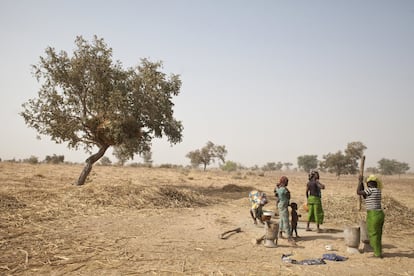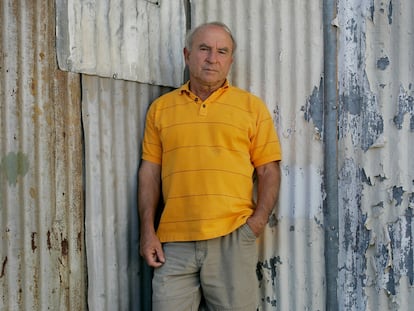No green world with poverty
Addressing climate change without addressing social challenges will only delay investments and postpone results

This is the time for Multilateral Development Banks (MDBs) to recognize the concept of sustainability in their corporate missions and use intensive de-risking and financing mechanisms for climate action projects.
Addressing climate change without addressing social challenges will only delay investments and postpone results. The governors are calling MDBs to play a key role in rapidly mobilizing resources to tackle global challenges. To achieve this, the current financial architecture needs to evolve to maximize resources and design innovative low-cost financing instruments or strategies.
The clock is ticking, and global action to accelerate investments does not wait.
A new sustainability mission
MDBs originally emerged with the objective of supporting reconstruction and development. Nowadays, they are active institutions promoting sustainable policies and contributing positively to building resilience, fighting climate change, and reducing poverty. However, for accelerating investment in global challenges, such as climate change, these institutions need to recognize in their missions the sustainability vision they already endorsed.
For instance, the World Bank aims to reduce poverty and share prosperity, but including the sustainability goal will facilitate identifying the cross effects, externalities, and spillovers to the extent that green policies could also be social, while social policies could also be green. It might sound like just semantics, but sustainability captures these two public policy dimensions.
Currently, developing economies are struggling to adapt to and mitigate climate impact. Most of the time, they need to invest in the very short term in long-lasting social challenges such as poverty. This situation is even more difficult due to the negative impacts of Covid-19 and wars, while the world is entering a high-interest environment with growing financing gaps, inflation and reduced fiscal space.
Critical global challenges may evolve even faster over the coming years; thus, extending the MDBs’ corporate mission now is crucial, bringing sustainability to its core. MDBs need to shape policies and actions to recognize that social and environmental policies are intertwined and to consider their cross effects. There will not be a green world with poverty or inequity.
Innovative Financial Architecture
Speeding investments in climate change will involve more resources to deliver on pressing demands provoked by global challenges and to continue fighting poverty. For this, MDBs need to potentiate their sustainability focus and redesign the financial architecture. This means finding innovative ways to speed investment for sustainability, deliver on global funding needs, and reduce financing gaps and financing costs.
In post-covid times, economies are cash limited due to high debt burdens, high interest rates, natural hazards, and war. At the same time, the financing gap to address climate change keeps growing. Therefore, there are not enough resources in the international funds or development banks’ balance sheets to curb adverse effects in the coming years, especially for middle- and low-income countries. On top of that, countries need to continue investing in social policy.
If MDBs want to accelerate climate change investments, they must completely change how they provide funding. Today, MDBs provide lending with differentiating costs depending on the country’s income level. Climate change has a global impact on all human life, but countries face different financial costs. There is an evident inequality when high-income economies can conduct investments at the lowest financial costs, while low- and middle-income countries will struggle to address both environmental and social issues.
The same problem, the same financing cost approach proposed by the US Treasury may be suitable for global challenges -such as climate change- to provide affordable financing options independently of the country’s income level. For this, MDBs need more flexibility in their financing policies, combine different financial instruments, and tailor them to each country’s needs, considering their access to financial markets and other elements.
On the one hand, countries with broad market access may require financial instruments to reduce risks early in the investment cycle. For these countries, using credit enhancers to reduce the financial cost of specific projects may be a suitable approach. On the other hand, countries with less market access may need to rely on a mix of conventional loans and grants to provide concessional financing. Countries falling somewhere in between may require a different combination of solutions as necessary.
Considering the specific country’s circumstances will ensure effectiveness. For example, greening the MDBs’ guarantees for project finance -currently underutilized by MDBs and governments- and creating concessional funding mixes may be extremely useful to enhance public and private investments in sustainability.
Since the financing gap is massive, the MDBs financing effort must be complemented by the private sector. For this, all the resources in an economy should be proactively focused on addressing sustainability by combining social and environmental policies. The private financing arms of the MDBs are essential for market development and to mobilize private resources towards at least one sustainable objective. These arms could support policies and financial regulation for some countries with market access. For example, Mexico is building a market-driven sustainable finance approach that includes the development of sustainable debt and capital markets, as well as the use of sustainable taxonomies in the financial sector to mobilize more resources toward sustainable projects.
In this regard, global action is needed, and the MDBs have a leading role in promoting practices and policies. There seems to be a positive and proactive feeling as the governors of the MDBs will meet in the spring meetings. The US Treasury is championing a change in the MDBs approach to reduce financing costs and speed investment for climate actions, and with the change in leadership at the World Bank and the Inter-American Development Bank, an opportunity presents itself to achieve this goal.
The effort to achieve sustainability needs to be urgently expanded and will need to be coupled with low-cost financing and rapid resource mobilization at a global scale. MDBs are called to be at the core of this effort.
Gabriel Yorio-Gonzalez is currently the deputy finance minister of Mexico and MDB´s Alternate Governor.
Sign up for our weekly newsletter to get more English-language news coverage from EL PAÍS USA Edition
Tu suscripción se está usando en otro dispositivo
¿Quieres añadir otro usuario a tu suscripción?
Si continúas leyendo en este dispositivo, no se podrá leer en el otro.
FlechaTu suscripción se está usando en otro dispositivo y solo puedes acceder a EL PAÍS desde un dispositivo a la vez.
Si quieres compartir tu cuenta, cambia tu suscripción a la modalidad Premium, así podrás añadir otro usuario. Cada uno accederá con su propia cuenta de email, lo que os permitirá personalizar vuestra experiencia en EL PAÍS.
¿Tienes una suscripción de empresa? Accede aquí para contratar más cuentas.
En el caso de no saber quién está usando tu cuenta, te recomendamos cambiar tu contraseña aquí.
Si decides continuar compartiendo tu cuenta, este mensaje se mostrará en tu dispositivo y en el de la otra persona que está usando tu cuenta de forma indefinida, afectando a tu experiencia de lectura. Puedes consultar aquí los términos y condiciones de la suscripción digital.
More information
Últimas noticias
Maduro pleads not guilty before the federal court in New York: ‘I am still the president of Venezuela’
A new test can detect Alzheimer’s from a finger prick
UN team enters Sudanese city of El Fasher after paramilitary massacre: ‘It’s like a ghost town’
A recipe for resistance: Indigenous peoples politicize their struggles from the kitchen
Most viewed
- Gilles Lipovetsky: ‘If you want to live better and fall in love, take Prozac, don’t look to philosophy’
- Alain Aspect, Nobel laureate in physics: ‘Einstein was so smart that he would have had to recognize quantum entanglement’
- Alvin Hellerstein, a 92-year-old judge appointed by Bill Clinton, to preside over Maduro’s trial in New York
- Why oil has been at the center of Venezuela-US conflicts for decades
- Cuba confirms death of 32 of its citizens in the US attack against Venezuela










































